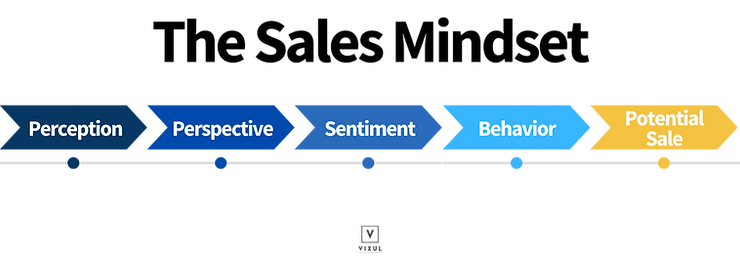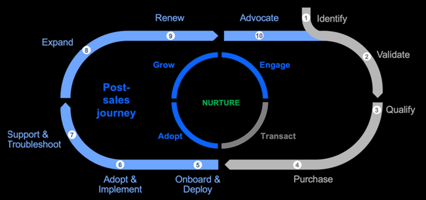The right customer experience will leave the customer grateful as if they've gotten a gift from the...
From Hello To Close: How To Sell Tech Services
This is a guest post by Syed Danish Irfan. Danish is a leader focused on client success at IBM. He previously shared insights on implementing a Client Engagement Model. In this article, he details the presales process and tactics for tech services founders.
In a tech services company, the stage for your relationship is set during the presales stage. Presales involves a series of strategic and tactical activities that help to qualify leads, address potential clients' needs, and create a compelling value proposition. A well-structured presales framework not only enhances the efficiency of the sales team but also increases the likelihood of closing deals. This article delves into the presales process, its significance, and the essential components of an effective presales framework.
The Sales Mindset

Underpinning any sale is a sales mindset. Having a sales mindset rooted in positive thinking is what ultimately drives salespeople to see opportunities for selling where others may not. A sales interaction starts with an understanding of the human psyche. People create either a positive or a negative perception of every interaction they have. Sales teams need to invest their effort into making sure their prospective client forms a positive perception of them.
This leads to the formation of a perspective where the client starts to believe the sales team is worth their time. In other words, the client needs to receive value from that sales team. This is critical as it helps in any further discussion with this client. A positive perspective feeds into the prospect's sentiments towards the solution being discussed. Sentiments drive behavior into action. And these actions are your potential sales.
Making Sales Happen: The Presales Process
Delivering value does not happen by chance. It requires a coordinated, thought-out process. These activities are designed to prepare and position a product or service to potential customers, ensuring that the sales team is well-equipped to address client needs and objections.

The presales process has three broad stages: the first impression you give your clients, building strength through your discovery process, and asking the final close with confidence and competence. Let’s explore each of these stages further.
First Impressions
Strong presales teams differentiate themselves from the competition by doing extensive market research to understand the client market dynamics. They speak the language of the client’s industry, which helps to lead with a strong first impression. This usually starts off at the proposal stage with detailed answers to the questions within the proposal. Presenting a compelling proposal that outlines the benefits, features, and pricing of the proposed solution helps differentiate you from the competition.
Discovery
This step involves two parallel aspects: discovering the client’s compelling reasons to act (CRTA) and key decision-makers. CRTA is the concept of understanding the client's specific use cases and pain points, which the client is trying to resolve. It is best to identify the top three use cases (by priority), which helps deliver a strong, focused value proposition of the solution that is to be presented through a demo or a proof of concept (PoC).
In parallel, the sales team should also work to identify how to sell to the organization. This includes:
-
Identifying the key stakeholders who hold the authority to sign the deal because, ultimately, you need to convince them you are the right choice.
-
Having a decent understanding of the client's organizational structure to understand the influencers and priorities of the key decision maker.
-
An understanding of the budget allocated for this project so you can design a solution appropriate to their needs.
Close with Confidence
A solid discovery to deeply understand the CRTA use cases with the key stakeholders for this deal positions the sales team well for a strategic and targeted approach toward a strong proposal/solution. After a successful round of demos and/or PoC, the sales team can have a confident approach to closing the deal. The keys to building this confidence are:
-
Conducting a strong PoC: Presales professionals can tailor solutions that align closely with customer requirements. A strong presales process helps articulate a product or service's unique value proposition, making it more appealing to the customer during a well-structured demo or a proof of concept (PoC) tailored to their specific use cases.
-
Handling Objections and Negotiations: Address any concerns or objections raised by the potential customer and negotiate terms to reach a mutually beneficial agreement. Proactively addressing any issues or objections raised by the client with well-prepared responses. Collaborating with the client to finalize terms and conditions that satisfy both parties.
-
Finalizing the Sale: Secure the potential customer's commitment and transition to the contract signing and implementation phase. Draft and review the final contract to ensure all agreed-upon terms are accurately reflected. Obtain the client's signature on the contract and officially close the sale.
Wrapping Up
Your presales process is the handover from marketing to sales in your customer's buyer journey. It's critical to the success of your overall sales cycle and the value you aim to deliver to your clients as a premium emerging tech services provider. It pays to invest effort in developing this process.
A well-defined presales framework helps you qualify leads faster, better understand customer needs, and present compellingly tailored solutions that ultimately increase the likelihood of closing deals. The more deals you close, the more deals you can close because, as a service company, every successful delivery is one more point of evidence in your favor.
But value doesn't happen by accident. Implementing an effective presales framework requires collaboration, strategic planning, and a deep understanding of the market and customer needs. By focusing on these elements, businesses can create a seamless transition from prospect to satisfied customer, ensuring long-term success in a competitive landscape.





